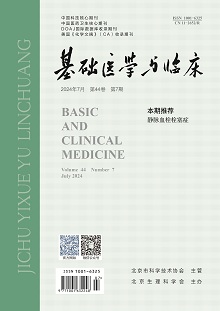Over-expression of TREM2 alleviates cognitive impairment after traumatic brain injury in rats
YANG Qi, XU Feng, JIAO Yang, ZHANG Sai, SUN Zhong-lei
2021, 41(12):
1724-1729.
 Asbtract
(
232 )
Asbtract
(
232 )
 PDF (1007KB)
(
101
)
References |
Related Articles |
Metrics
PDF (1007KB)
(
101
)
References |
Related Articles |
Metrics
Objective To explore the effect of over-expression of triggering receptor on dementia model after traumatic brain injury (TBI) in rat model and potential mechanism. Methods Rats were randomly divided into control group and TBI test groups of 2, 5, 7, 14 and 28 days (n=8). RT-qPCR and Western blot were used to detect trem2 mRNA and protein levels in brain tissues. The remaining 32 rats were randomly divided into 4 groups (n=8): control group, TBI group, (TBI+Null) group and (TBI+ TREM2) group. The (TBI+Null) group was injected with control lentiviral vector, and the (TBI+TREM2) group was injected with the same amount of lentiviral vector encoding TREM2. The memory function of rats in each group was assessed by Morris water maze, and the expression of microglia phenotypes (iNOS and Arg-1), neuroinflammatory related factors(IL-1β, IL-6, IL-4 and IL-10) and cognition-related proteins [amyloid β1-42 (Aβ1-42) and tau] in brain tissues of rats from each group were assessed by RT-qPCR and Western blot. Results Compared with the control group, the expressions of TREM2, TREM2 mRNA, mean escape latency, iNOS, IL-1β, IL-6, Aβ1-42 and Tau were all increased in TBI group, while the expression of Arg-1, IL-4 and IL-10 significantly decreased (P<0.05). (TBI+TREM2) group significantly alleviated the mean escape latency, increased expression of iNOS, IL-1β, IL-6, Aβ1-42 and Tau, and decreased expression of Arg-1, IL-4 and IL-10 (P<0.05). Conclusions TREM2 over-expression can regulate the microglial phenotype in brain tissue of TBI rats, reduce the expression of cognition-related proteins (Aβ1-42, tau), and improve the learning and memory function of the animal model.


